1. Girgis FG, Marshall JL, Monajem A. 1975; The cruciate ligaments of the knee joint. Anatomical, functional and experimental analysis. Clin Orthop Relat Res. (106):216–31. DOI:
10.1097/00003086-197501000-00033. PMID:
1126079.
2. Gray H, Standring S, Ellis H, Berkovitz BKB. 2005. Gray's anatomy: the anatomical basis of clinical practice. 39th ed. Elsevier Churchill Livingstone;New York: p. 1474.
3. Collins SL, Layde P, Guse CE, Schlotthauer AE, Van Valin SE. 2014; The incidence and etiology of anterior cruciate ligament injuries in patients under the age of 18 in the state of Wisconsin. Pediat Therapeut. 4:196.

4. Sonnery-Cottet B, Chambat P. 2006; Anatomic double bundle: a new concept in anterior cruciate ligament reconstruction using the quadriceps tendon. Arthroscopy. 22:1249.e1–4. DOI:
10.1016/j.arthro.2006.07.042. PMID:
17084307.

5. Kopf S, Pombo MW, Irrgang JJ, Szczodry M, Shen W, Fu FH. 2012; Size variability of the human anterior cruciate ligament insertion sites. Arthroscopy. 28(Suppl):e400–1. DOI:
10.1016/j.arthro.2012.05.597. PMID:
20847222.

6. Ferretti M, Alves MTS, Marcondes FB, Amaro JS, Fu FH, Cohen M. 2012; Anatomical and histological study of the anterior cruciate ligament: is there an intermediate bundle? Arthroscopy. 28(Suppl):e401–2. DOI:
10.1016/j.arthro.2012.05.598.
7. Ferretti M, Doca D, Ingham SM, Cohen M, Fu FH. 2012; Bony and soft tissue landmarks of the ACL tibial insertion site: an anatomical study. Knee Surg Sports Traumatol Arthrosc. 20:62–8. DOI:
10.1007/s00167-011-1592-z. PMID:
21710110.

8. Gil YC, Park JA, Yang HJ, Lee HY. 2008; Anatomy of the femoral attachment site of the anterior cruciate ligament and the posterolateral structures related to the stability of the knee joint. Anat Cell Biol. 41:57–65.
9. Tan JL, Chang PC, Mitra AK, Tay BK. 1998; Anthropometry of anterior cruciate ligament in Singaporean Chinese. Ann Acad Med Singapore. 27:776–9. PMID:
10101548.
10. Śmigielski R, Zdanowicz U, Drwięga M, Ciszek B, Ciszkowska-Łysoń B, Siebold R. 2015; Ribbon like appearance of the midsubstance fibres of the anterior cruciate ligament close to its femoral insertion site: a cadaveric study including 111 knees. Knee Surg Sports Traumatol Arthrosc. 23:3143–50. DOI:
10.1007/s00167-014-3146-7. PMID:
24972997. PMCID:
PMC4611008.

11. Oka S, Schuhmacher P, Brehmer A, Traut U, Kirsch J, Siebold R. 2016; Histological analysis of the tibial anterior cruciate ligament insertion. Knee Surg Sports Traumatol Arthrosc. 24:747–53. DOI:
10.1007/s00167-015-3924-x. PMID:
26685684.

12. Petersen W, Tillmann B. 2002; [Anatomy and function of the anterior cruciate ligament]. Orthopade. 31:710–8. German. DOI:
10.1007/s00132-002-0330-0. PMID:
12426749.
13. Siebold R, Ellert T, Metz S, Metz J. 2008; Femoral insertions of the anteromedial and posterolateral bundles of the anterior cruciate ligament: morphometry and arthroscopic orientation models for double-bundle bone tunnel placement--a cadaver study. Arthroscopy. 24:585–92. DOI:
10.1016/j.arthro.2007.12.008. PMID:
18442692.

14. Harvey A, Thomas NP, Amis AA. 2005; Fixation of the graft in reconstruction of the anterior cruciate ligament. J Bone Joint Surg Br. 87:593–603. DOI:
10.1302/0301-620X.87B5.15803. PMID:
15855357.

15. Siebold R, Schuhmacher P, Fernandez F, Śmigielski R, Fink C, Brehmer A, Kirsch J. 2015; Flat midsubstance of the anterior cruciate ligament with tibial "C"-shaped insertion site. Knee Surg Sports Traumatol Arthrosc. 23:3136–42. DOI:
10.1007/s00167-014-3058-6. PMID:
24841941. PMCID:
PMC4611027.

16. Śmigielski R, Zdanowicz U, Drwięga M, Ciszek B, Williams A. 2016. The anatomy of the anterior cruciate ligament and its relevance to the technique of reconstruction. Bone Joint J. 98-B:1020–6. DOI:
10.1302/0301-620X.98B8.37117. PMID:
27482012.

18. Murray PJ, Alexander JW, Gold JE, Icenogle KD, Noble PC, Lowe WR. 2010; Anatomic double-bundle anterior cruciate ligament reconstruction: kinematics and knee flexion angle-graft tension relation. Arthroscopy. 26:202–13. DOI:
10.1016/j.arthro.2009.07.014. PMID:
20141983.

19. Smith PA, Bley JA. 2017; Anterior cruciate ligament primary repair with independent tensioning of the anteromedial and posterolateral bundles. Arthrosc Tech. 6:e2123–8. DOI:
10.1016/j.eats.2017.08.022. PMID:
29349007. PMCID:
PMC5766347.

20. Tanabe Y, Yasuda K, Kondo E, Kawaguchi Y, Akita K, Yagi T. 2019; Comparison of graft length changes during knee motion among 5 different anatomic single-bundle anterior cruciate ligament reconstruction approaches: a biomechanical study. Orthop J Sports Med. 7:2325967119834933. DOI:
10.1177/2325967119834933. PMID:
30937322. PMCID:
PMC6435881.

21. van der List JP, Mintz DN, DiFelice GS. 2017; The location of anterior cruciate ligament tears: a prevalence study using magnetic resonance imaging. Orthop J Sports Med. 5:2325967117709966. DOI:
10.1177/2325967117709966. PMID:
28680889. PMCID:
PMC5484434.

22. Park HS, Ahn C, Fung DT, Ren Y, Zhang LQ. 2010; A knee-specific finite element analysis of the human anterior cruciate ligament impingement against the femoral intercondylar notch. J Biomech. 43:2039–42. DOI:
10.1016/j.jbiomech.2010.03.015. PMID:
20413123. PMCID:
PMC2900495.

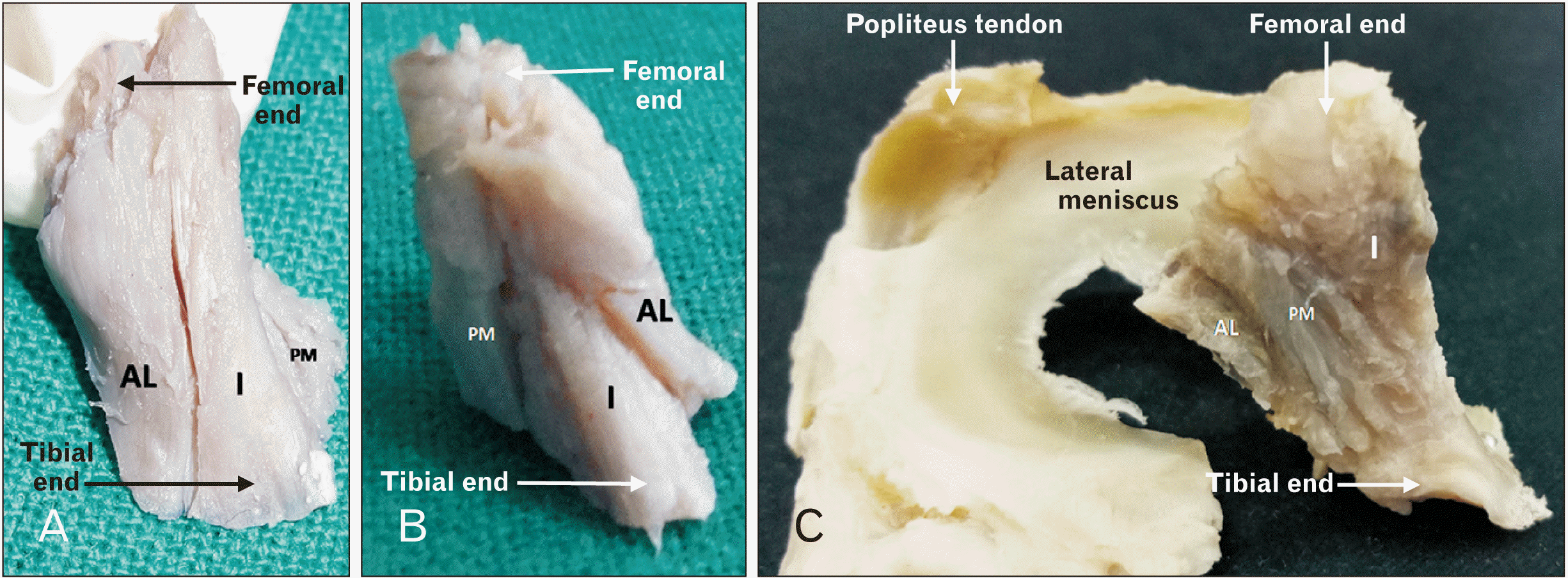
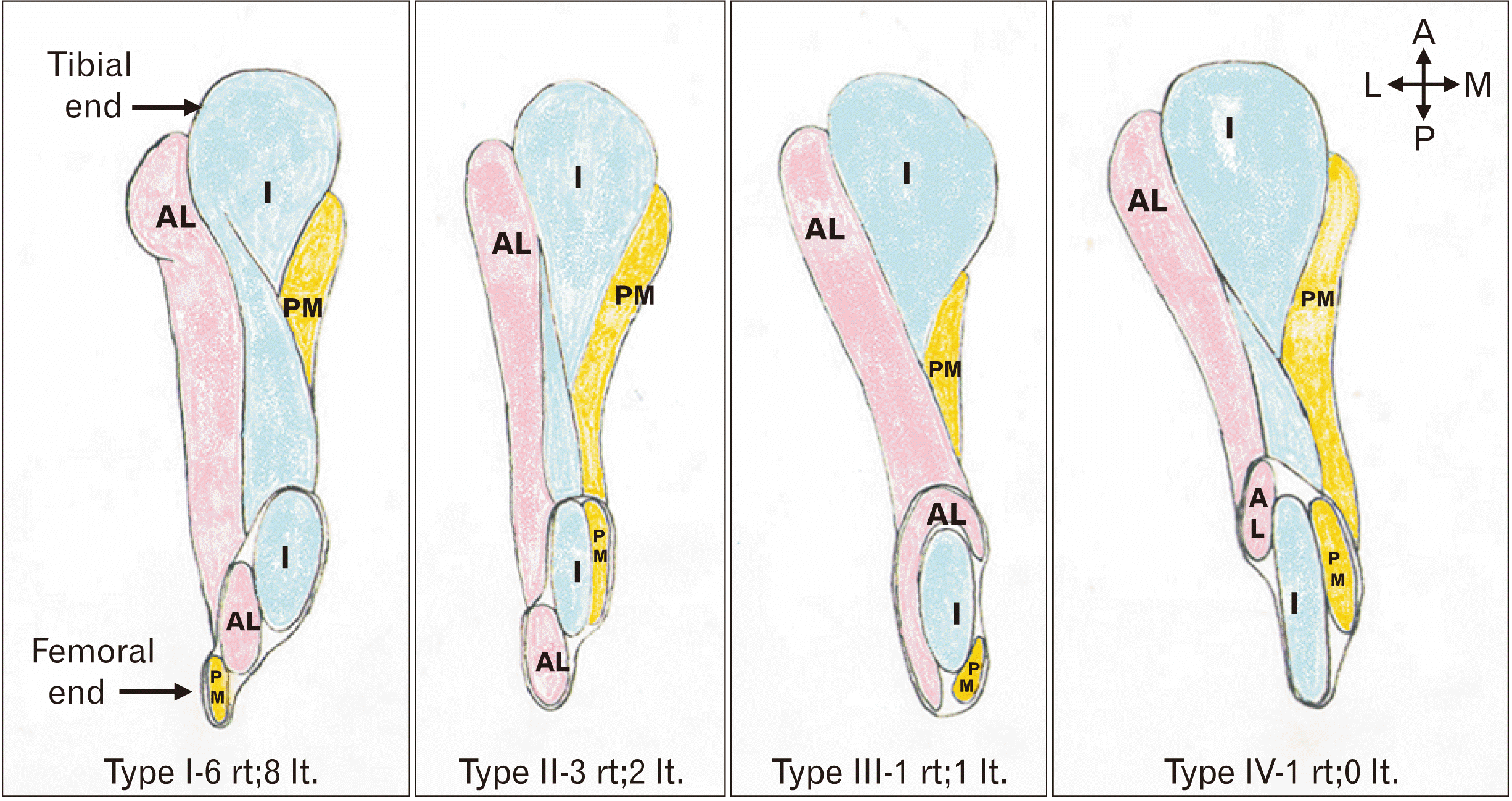
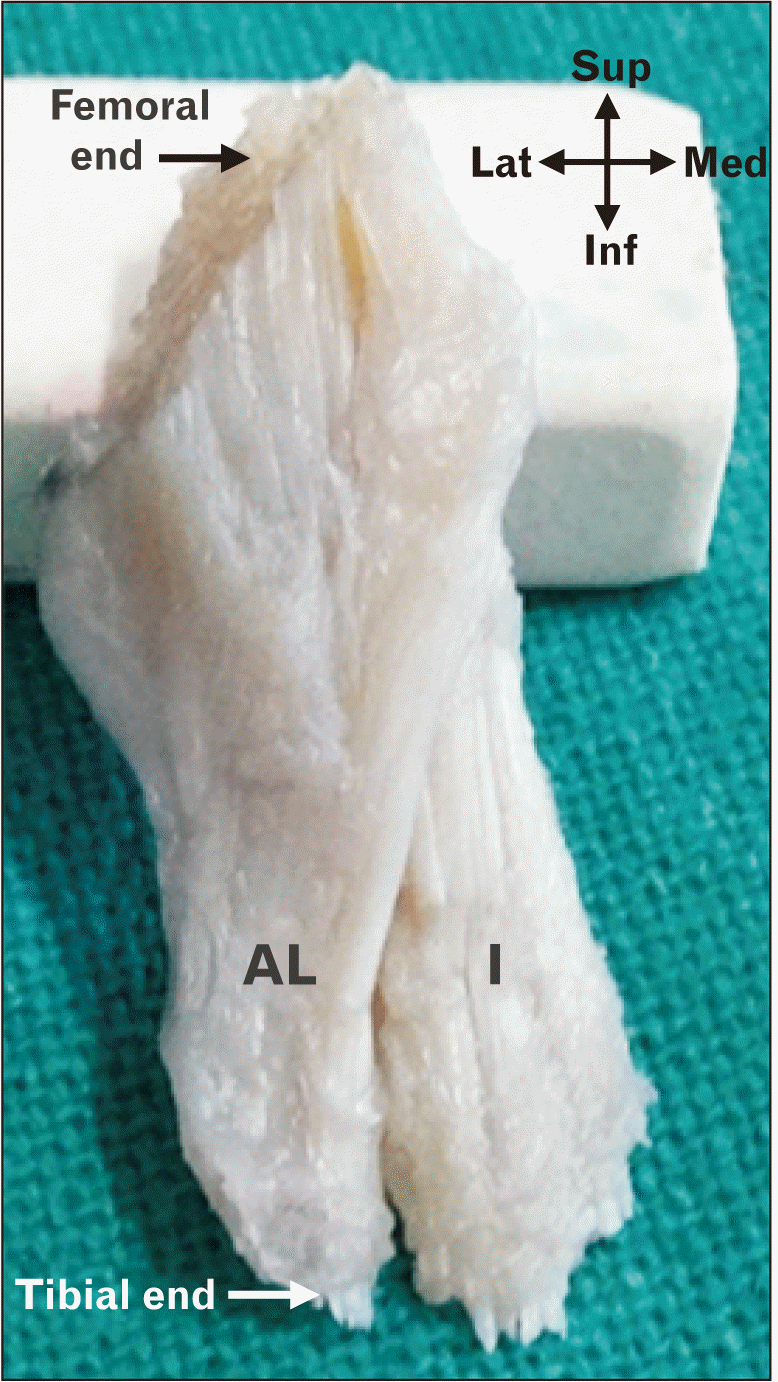




 PDF
PDF Citation
Citation Print
Print



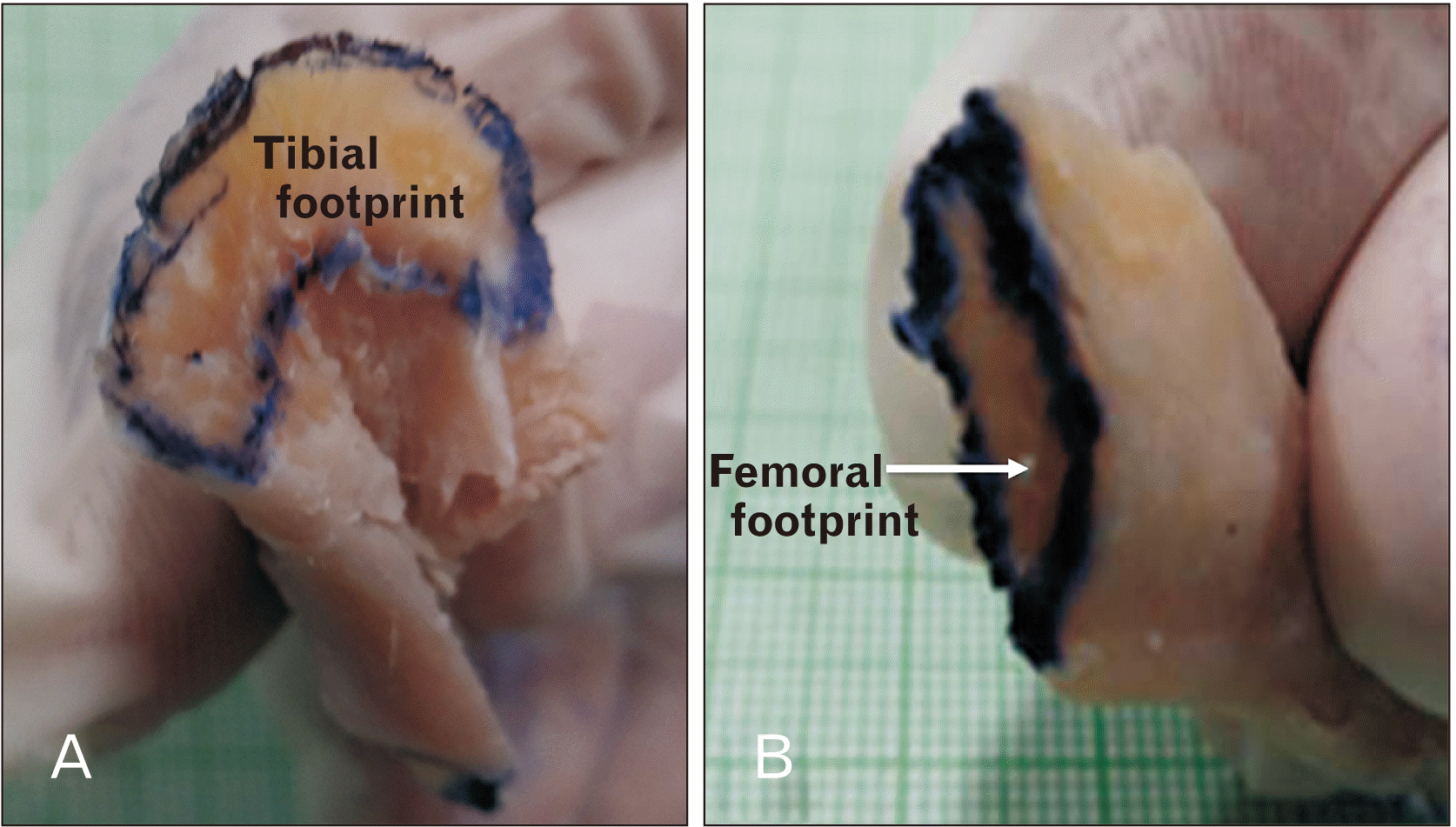
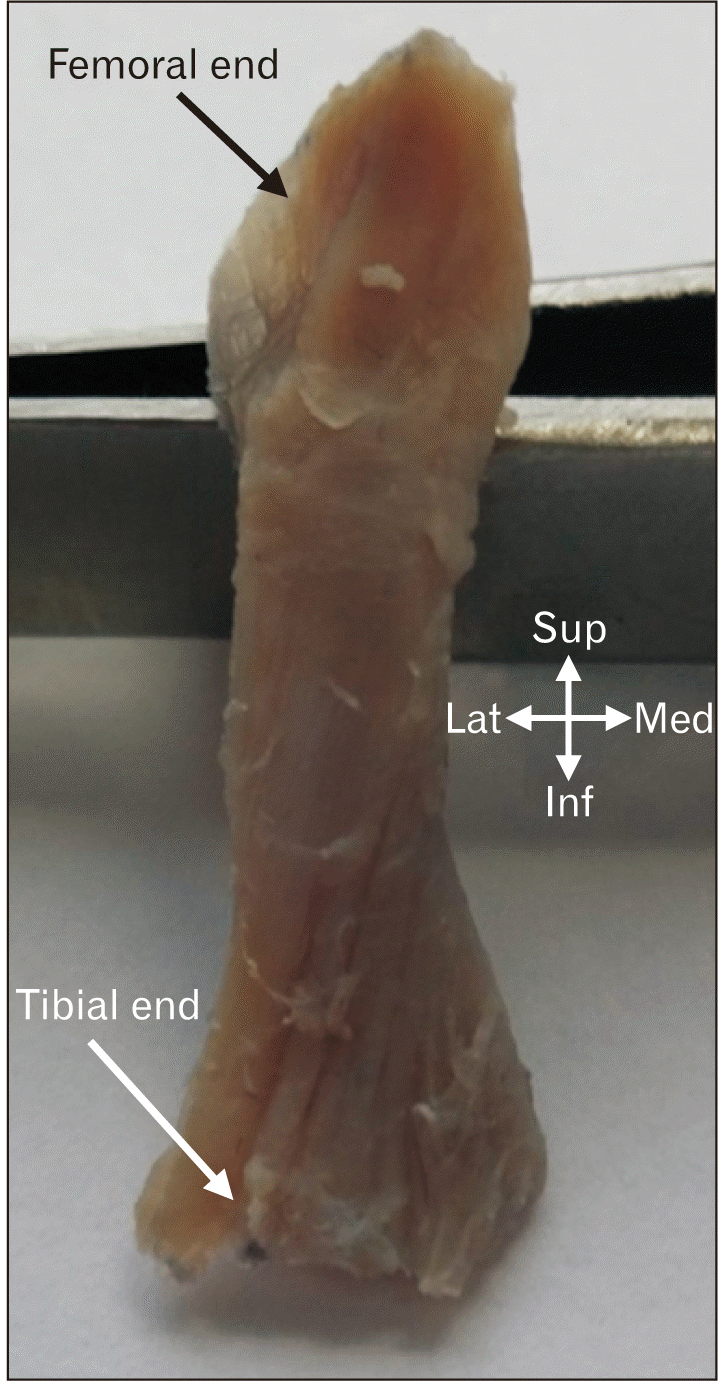
 XML Download
XML Download